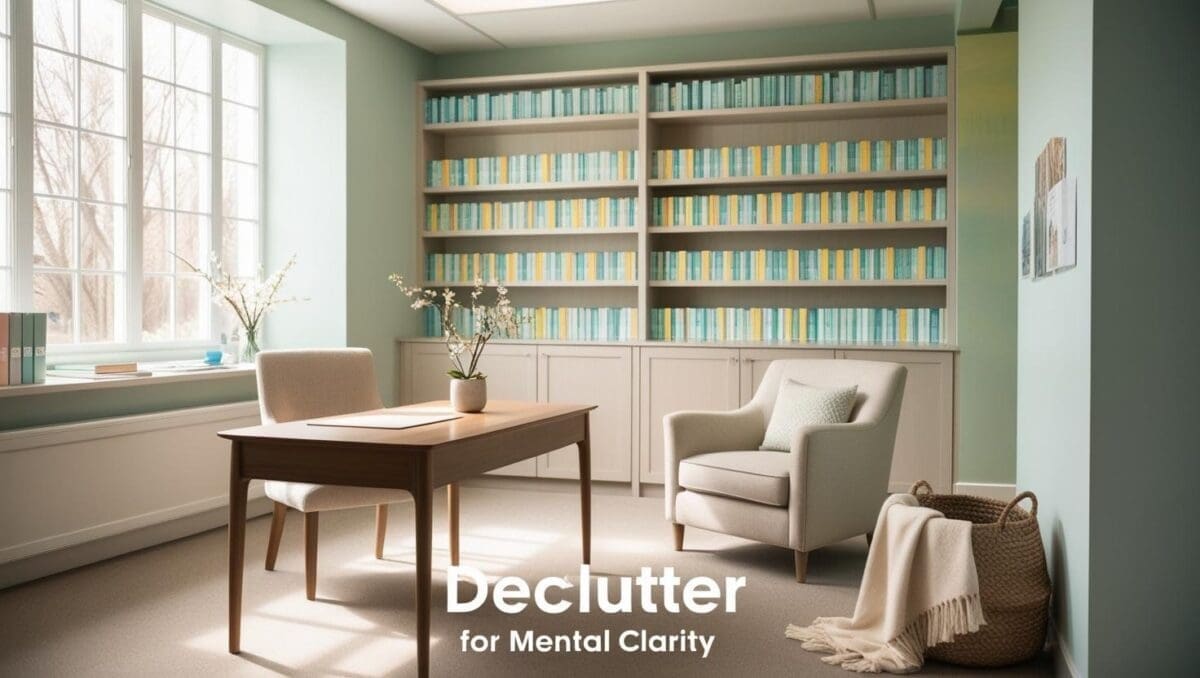Therapy dogs bring something to a counseling room that no furniture, lighting, or décor ever could — living empathy.
Their presence turns sterile environments into places of connection, safety, and quiet trust. Whether curled beside a client’s chair or greeting visitors in the waiting room, a well-trained therapy dog helps bridge the emotional distance that often keeps people from opening up.
Let’s explore the profound emotional benefits therapy dogs bring to counseling spaces — for clients, for therapists, and for the space itself.
1. They Create Instant Emotional Safety
The first moments of a therapy session are everything. A client’s nervous system is scanning: Am I safe here?
A calm, gentle therapy dog answers that question without words.
Why it matters:
- Touching or observing a dog releases oxytocin — the bonding hormone that reduces fear responses.
- Dogs model emotional co-regulation, helping anxious clients breathe more slowly.
- They shift the atmosphere from clinical to relational.
For trauma-informed therapy:
Clients who struggle with trust or hypervigilance often find a therapy dog’s presence grounding — a nonverbal anchor of safety.
2. They Model Authentic Connection
Therapy dogs don’t care about titles or diagnoses — they connect to emotion directly.
What this models for clients:
- Unconditional acceptance without judgment.
- The ability to communicate comfort without fixing.
- Mutual presence — just “being” instead of “doing.”
In practice:
A shy child who can’t meet the therapist’s eyes may start by petting the dog.
A grieving adult may find relief in the dog’s silent companionship.
These moments are bridges — emotionally reparative micro-interactions that foster authentic connection.
3. They Support Mindfulness & Regulation
Dogs are mindfulness in motion — they notice everything in the moment: sound, scent, tone, breath.
Therapeutic impact:
- Clients learn to slow down and match the dog’s rhythm.
- Therapists can use the dog’s body language to mirror human emotions (“Do you notice how Max is watching your hands? He can sense you’re tense.”).
- Breathing or petting exercises with the dog enhance interoceptive awareness (the ability to feel internal states).
Simple exercise:
Invite the client to sync their breath with the dog’s — slow, steady, grounded.
This sensory focus helps reduce dissociation and anxiety.
4. They Normalize Emotion
Dogs don’t flinch at tears.
They don’t rush to problem-solve or make sadness disappear.
Why that matters:
In sessions where emotional expression feels risky, a therapy dog’s calm observation normalizes vulnerability.
Clients may say, “He doesn’t mind if I cry.” — and realize it’s safe for the therapist not to, either.
The result:
Emotions become part of the room’s natural flow, not disruptions to it.
5. They Help Clients Build Trust Faster
For many clients, especially children, therapy starts as an unfamiliar ritual. A dog becomes a trust bridge.
Examples:
- Kids who resist participation may start sessions by “teaching” the dog tricks or showing them drawings.
- Teens with social anxiety often talk through the dog before talking to the counselor.
- Adults with trauma may test relational safety by watching how the therapist treats the dog.
Therapist insight:
Clients often project their own attachment patterns onto how they perceive the dog’s responses — offering valuable insight into relational themes.
6. They Offer Grounding During Emotional Flooding
When emotions rise too quickly, grounding is essential. A therapy dog provides immediate sensory support.
How it works:
- Physical touch (fur texture, warmth, rhythmic petting).
- Visual focus (watching the dog’s slow breathing).
- Auditory cue (listening to gentle panting or snoring).
Why it’s powerful:
The sensory consistency of an animal’s body can interrupt emotional spirals faster than verbal instruction.
7. They Support Therapist Regulation Too
Therapists need co-regulation as much as clients do.
Between sessions, sitting with your therapy dog can lower cortisol and restore emotional balance.
Benefits for the therapist:
- Built-in reminders to pause and breathe.
- Gentle physical movement (walks = micro-breaks).
- Emotional companionship after heavy sessions.
Symbolically:
A therapy dog models empathy for both parties — reminding therapists to practice the same care they offer others.
8. They Transform the Energy of the Room
The presence of a living, breathing being changes how space feels — literally and emotionally.
Environmental psychology meets therapy:
- Dog presence increases perceived warmth and authenticity.
- Clients describe rooms as “homey,” “safe,” and “less intimidating.”
- Even silence feels fuller — because something alive is sharing it.
Design insight:
Pairing soft lighting, natural textures, and a calm dog creates a multisensory environment of safety — especially valuable in trauma or grief therapy.
9. They Encourage Gentle Joy
Laughter and affection are essential parts of healing. Therapy dogs make that joy accessible, natural, and safe.
Why it helps:
Positive affect during sessions increases resilience and neural flexibility.
Joy becomes less of an idea — and more of a shared experience.
Final Thoughts
A therapy dog isn’t just an “add-on” to a counseling practice — they’re a co-regulator, a bridge, and a quiet reminder of unconditional presence.
They teach us — therapist and client alike — that healing isn’t always found in the right words, but in shared calm, gentle joy, and the steady rhythm of connection.
For more inspiration, explore Therapy Dog Decor Ideas and Therapy Dog Essentials & Gear for Counselors

About the Author
Hi, I’m Eve, a former school counselor with a master’s degree in School Psychology and a passionate advocate for children and families navigating sensory challenges. As a mom of children with sensory sensitivities, I deeply understand the journey special-needs parents face, and I dedicate myself to researching and sharing practical solutions to help children thrive and feel comfortable in their bodies. My goal is also to empower counselors, therapists, and psychologists with creative strategies and supportive resources to enrich their everyday practice. When I’m not writing or exploring new therapeutic approaches, you’ll find me spending quality time with my family and continually seeking inspiration from everyday moments.



